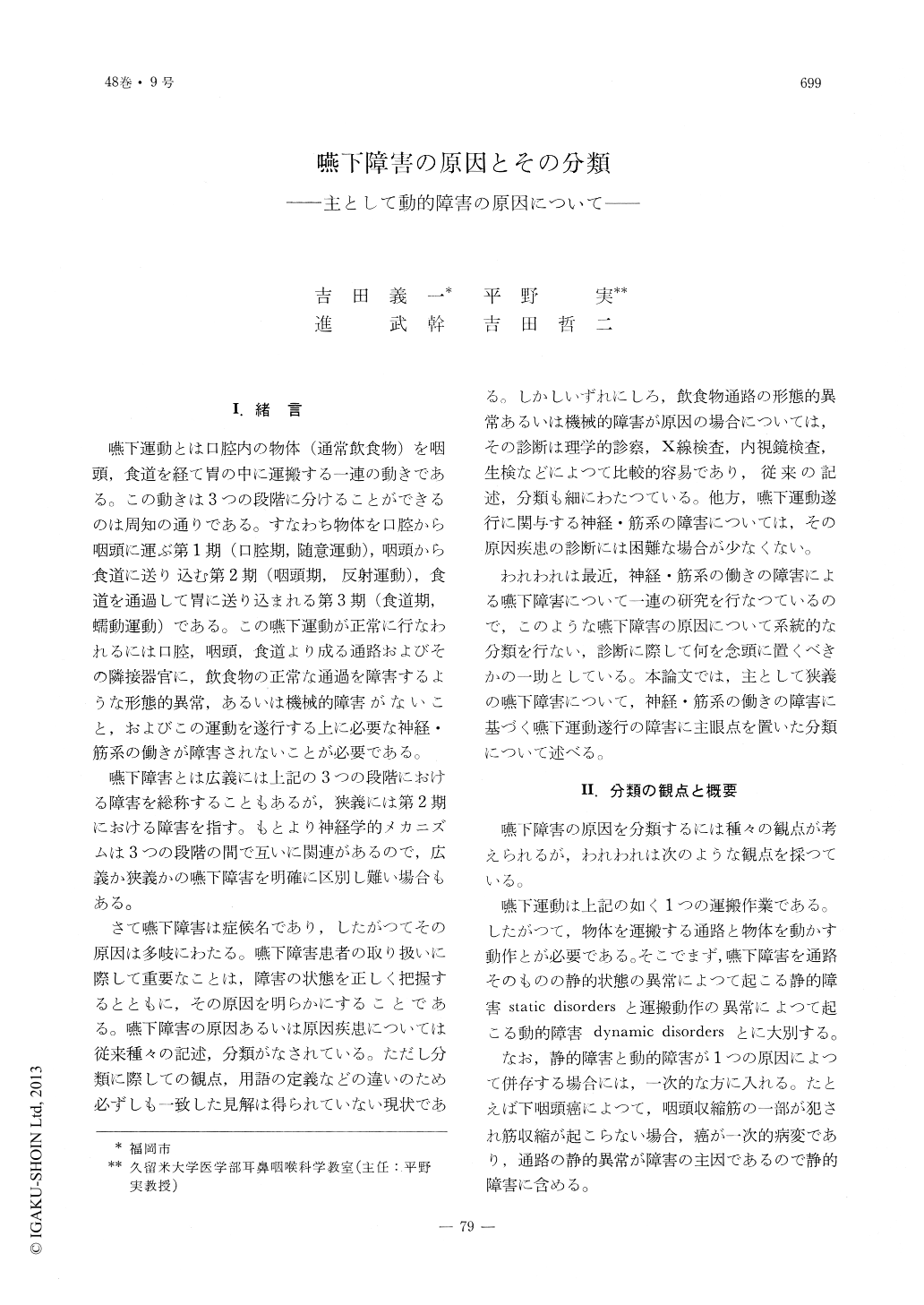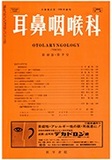Japanese
English
- 有料閲覧
- Abstract 文献概要
- 1ページ目 Look Inside
I.緒言
嚥下運動とは口腔内の物体(通常飲食物)を咽頭,食道を経て胃の中に運搬する一連の動きである。この動きは3つの段階に分けることができるのは周知の通りである。すなわち物体を口腔から咽頭に運ぶ第1期(口腔期,随意運動),咽頭から食道に送り込む第2期(咽頭期,反射運動),食道を通過して胃に送り込まれる第3期(食道期,蠕動運動)である。この嚥下運動が正常に行なわれるには口腔,咽頭,食道より成る通路およびその隣接器官に,飲食物の正常な通過を障害するような形態的異常,あるいは機械的障害がないこと,およびこの運動を遂行する上に必要な神経・筋系の働きが障害されないことが必要である。
嚥下障害とは広義には上記の3つの段階における障害を総称することもあるが,狭義には第2期における障害を指す。もとより神経学的メカニズムは3つの段階の間で互いに関連があるので,広義か狭義かの嚥下障害を明確に区別し難い場合もある。
Dysphagia is caused by various variety of pathologies involving the food passage. The authors have classified the nature of dysphagia into three major groups.
1. Static disorders where the passageway itself is involved with some abnormality.
2. Dynamic disorders where the movement of transportation is disturbed.
3. Sensory disorders where the sensation of the passageway is disturbed.
The causative pathologies of each group are listed up with a special concern to the dynamic disorders which could be classified into 6 subgroups on the basis in which causative pathologies in the neuromuscular system may be located : (a) supranuclear, (b) nuclear, (c) infranuclear, (d) neuromuscular junction or muscular, (e) psychogenic and (f) others.

Copyright © 1976, Igaku-Shoin Ltd. All rights reserved.


